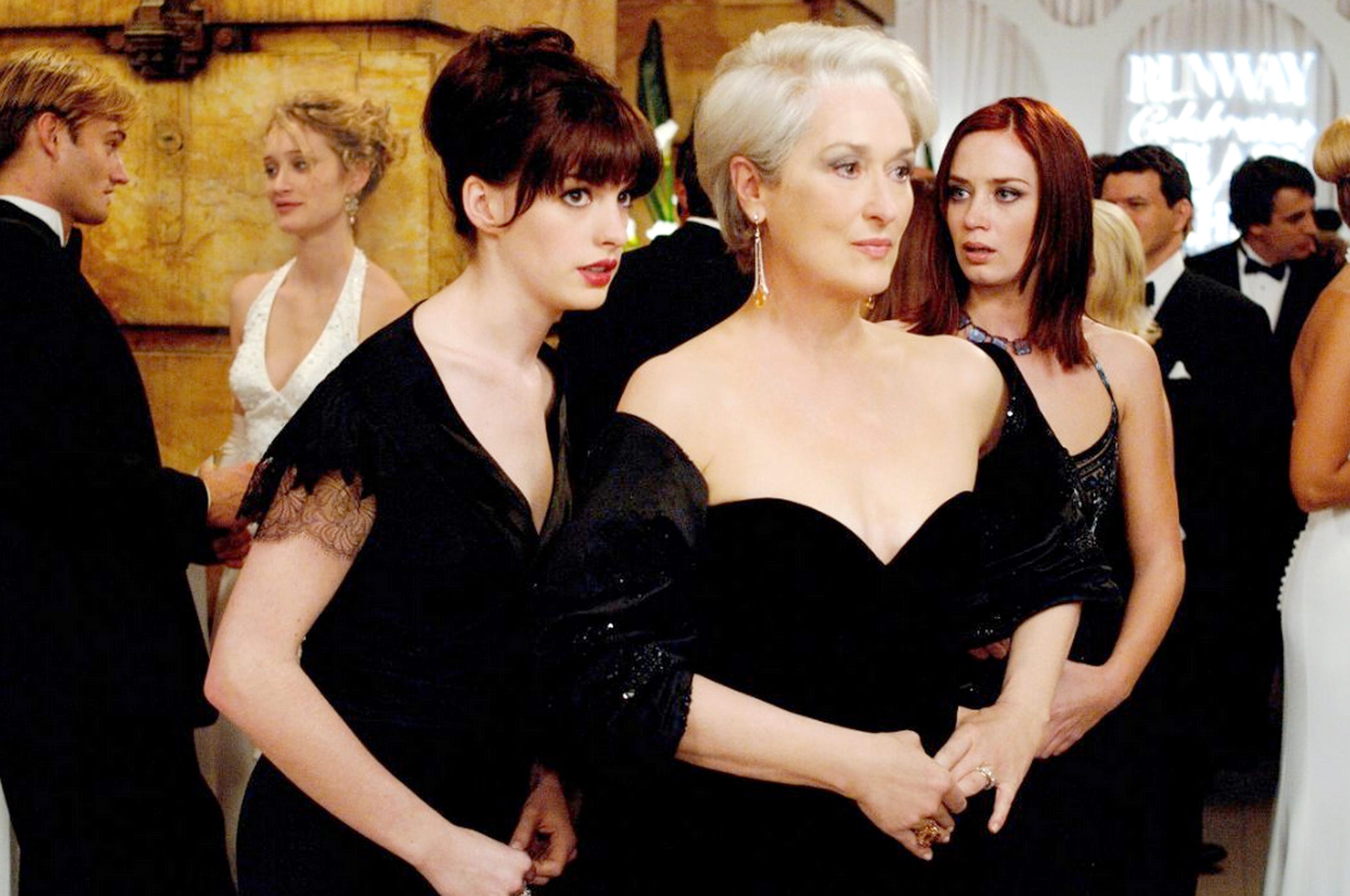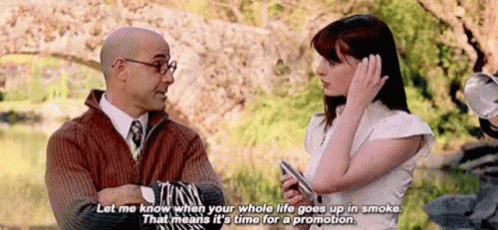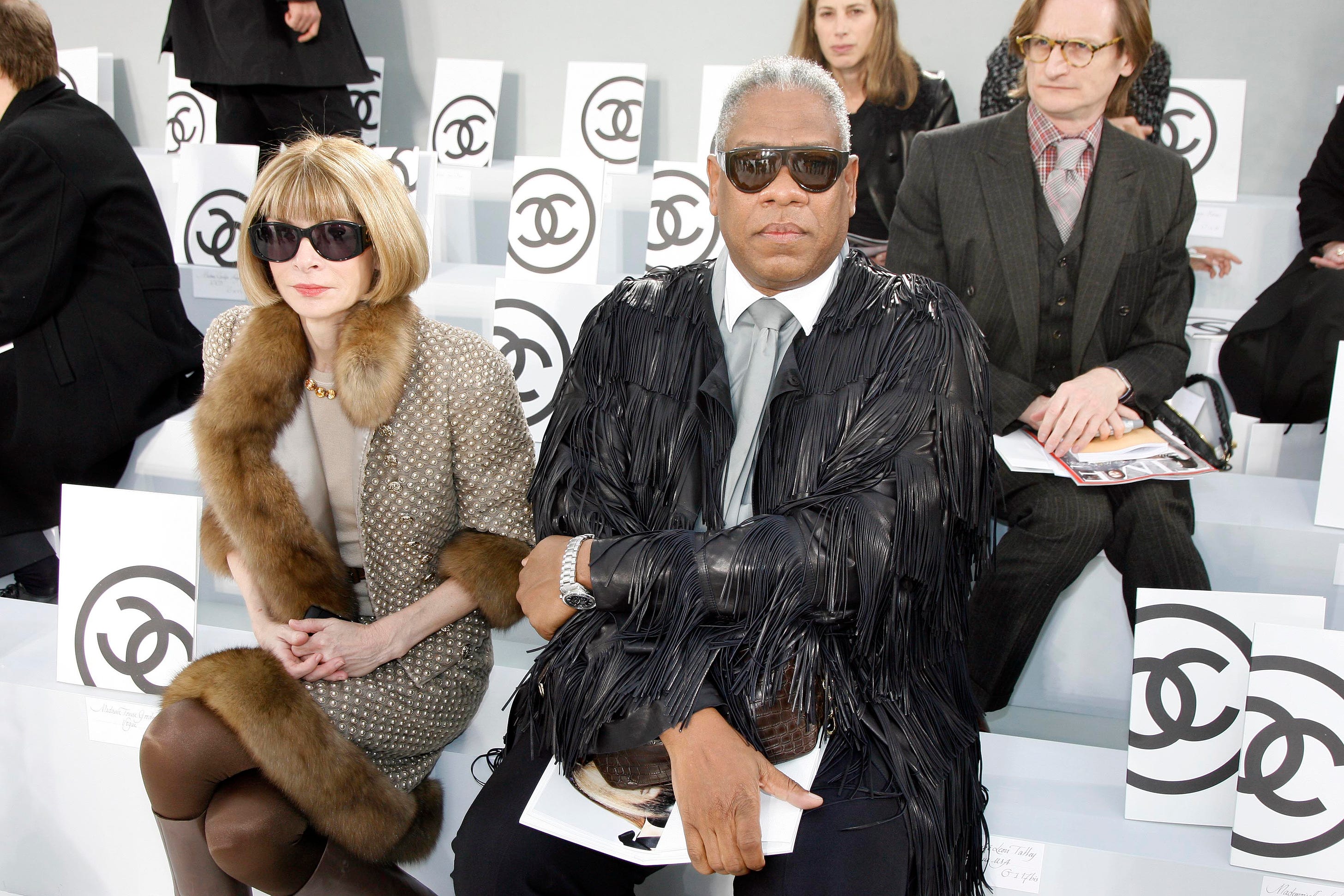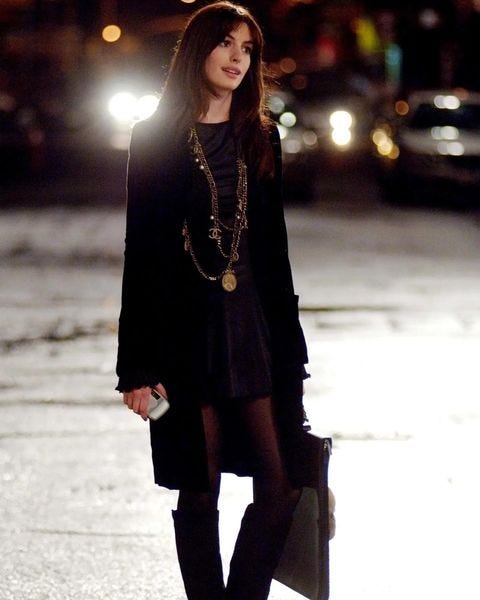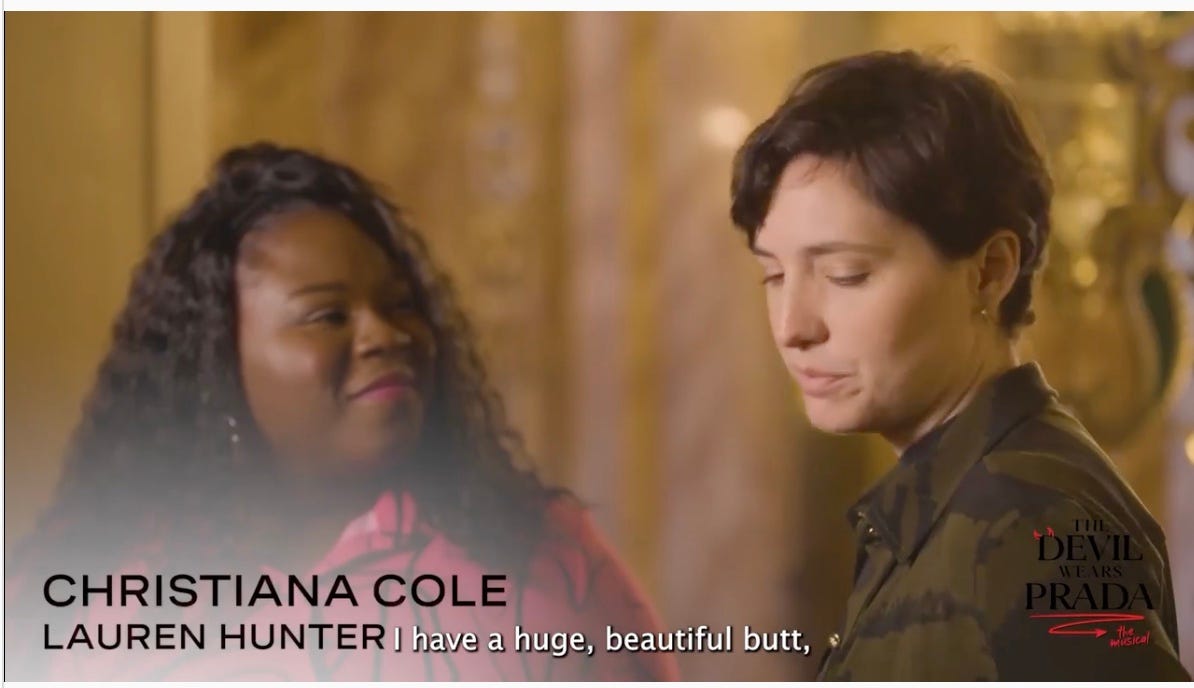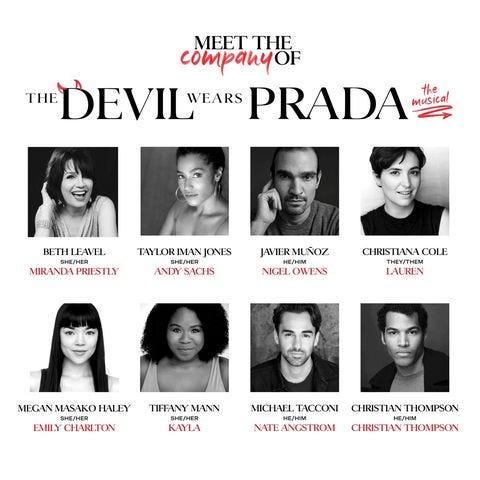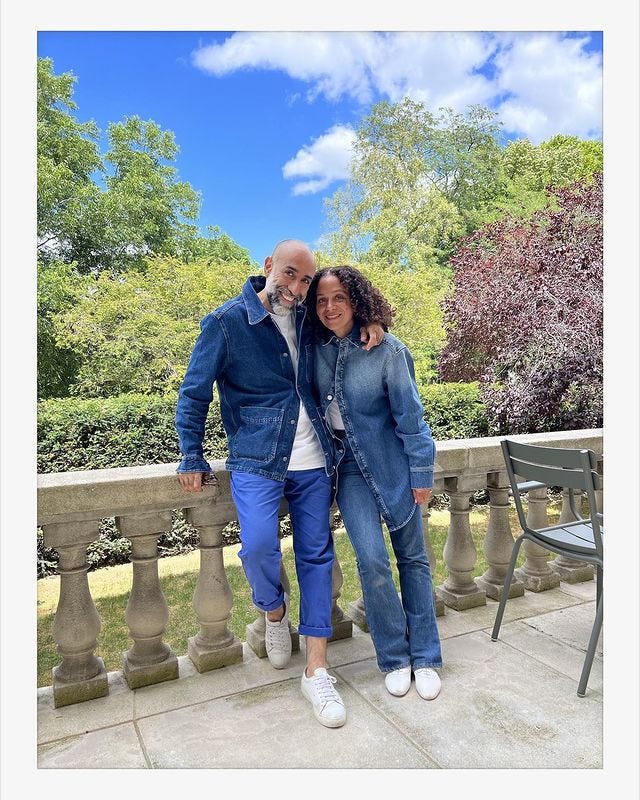Adieu, Fashion's 'Skinny White Women'?Anne Hathaway cried from hunger during 'The Devil Wears Prada'. So how to update the Broadway musical for 2022?You only need to watch the first 30 minutes of 2006’s The Devil Wears Prada to see how much the world has changed. The delicious movie version of Lauren Weisberger’s 2003 roman à clef, based on her experience working at Vogue as editor Anna Wintour’s assistant, was optioned by producer Wendy Finerman even before the book came out. Premiering during the middle of the summer just a sweet 16 years ago and initially derided as just a “chick flick” by some, it turned out to be a massive $350 million, give-or-take, worldwide hit for 20th Century Fox after the storyline was massively overhauled by the supremely talented screenwriter Aileen Brosh McKenna and director David Frankel. And, in the bargain, it became the most famous fashion movie ever made. The film is credited with several other accomplishments. For one, it further cemented the career of Meryl Streep, making her a bona fide solo star in her own right without needing a man to play against. It catapulted “ingenue” (does anybody still use that word?) Anne Hathaway, then only known as a teen favorite for The Princess Diaries, into adult roles eventually led to her Academy Award for Les Misérables. Behind the scenes, it was where actors Stanley Tucci and Emily Blunt met and became friends, which eventually led to Tucci marrying Blunt’s sister, Felicity, some years later. 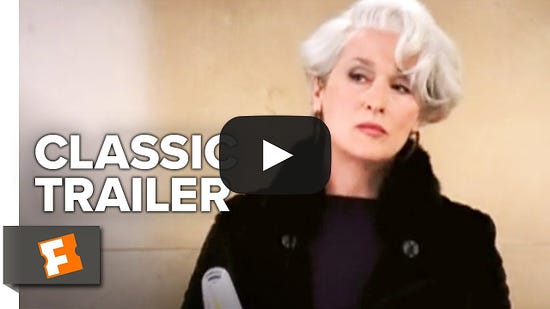 Prada also gave the fashion industry itself some much-deserved cred beyond its fluffy externals as a gazillion-dollar business woven into the lives of anyone who has ever put on “a lumpy sweater,” to quote Streep’s Miranda Priestly in the famous “cerulean” scene where she weaves the wholly fictional (but still authentic) tale behind a particular shade of blue that illustrates to the novice assistant, Hathaway’s Andrea “Andy Sachs,” how fashion trends that start in haute couture make their way down to the discount bin of a department store basement. And it was the ultimate Cinderella story in the bargain, especially for legions of young girls and gay boys, about the glamour, grit and sadism of the fashion industry and its attendant Big Important Magazines. Well, not to be a downer, but that era’s pretty much gone. The unlimited advertiser revenue of the pre-online aughts is a thing of the past, with its town cars and $300,000 cancelled photo shoots (a plot point in the movie that the publisher at Elias Clark, standing in for Condé Nast, just laughs about: “Those must have been some jackets!”). It was an era that reached its apotheosis in 2009’s documentary, The September Issue, where Wintour sliced and diced several print fashion layouts with glory days impunity. Of course, nobody’s laughing at Condé Nast these days, after years of multi-million-dollar losses and a succession of failed CEO’s, though current leader Roger Lynch’s slimmed-down regime of merged international and U.S. editions was reported to have finally eked out a profit in 2021 (some of it coming from — gasp! — affiliate links, and subscription products like the Vogue Club, which promises behind-the-scenes access, discounts on the mag’s march and events for $30 a month.) But more than the economics of the fashion/publishing complex wrecked by the digital revolution, the entire surrounding culture has changed as well. In Prada, the main players are all white, with only a couple of Black characters at the margins — Andy’s gal pal Lily who runs a gallery, seen only fleetingly, played by Tracie Thoms, and the designer James Holt, played by Daniel Sunjata. I hate to say it, that pretty much reflects the ways things were. At the magazine that gave me my start as a fashion editor in the ’80s, I don’t remember a single Black staffer. I’m not naming the publication because they were all like that. And it was much the same for the other magazines and newspapers that I freelanced for in the ’90s and beyond. Magazines, by and large, were a white industry for a white audience. Tucci’s performance as creative director Nigel, as deadpan funny as he is, seems problematic now for a couple of reasons. In real life, I’m pretty sure Weisberger based the character on real-life counterpart André Leon Talley, perhaps the only pivotal Black magazine editor during the time the author spent working at Vogue. And though Tucci’s character seems as erudite as Talley, the actor’s read on Nigel character always seemed off to me. There’s something missing, according to this gay man’s gaydar. Of course, these days, the role would probably be played by an out gay actor anyway. (Even straight Tom Hanks, in a recent New York Times Magazine interview, said he would not be able to give his Oscar-winning performance in Philadelphia playing gay, as he says, “rightly so.”) Prada also continually telegraphs fashion’s (and entertainment’s) longstanding fat-phobia, starting with the opening montage of a bunch of mostly white, skinny fashion ladies shown getting ready for the day, set to the admittedly seductive sway of singer-songwriter KT Tunstall’s chartbuster, “Suddenly I See.” Andy is repeatedly derided for being a size 6 (“the new 14,” Tucci snarls) and at one point, Streep’s Miranda voices her displeasure over a layout, remarking, “Is it impossible to find a lovely, slender paratrooper, or am I reaching for the stars?” Later, dressing down Andy, she whines witheringly, “I took a chance and hired the smart, fat girl.” Hathaway and Blunt were also said to have lost weight to look the part and Hathaway later told People, they "would clutch at each other and cry, because we were so hungry.” (“I’m one stomach flu away from my goal weight,” Blunt’s character declares in a scene.) 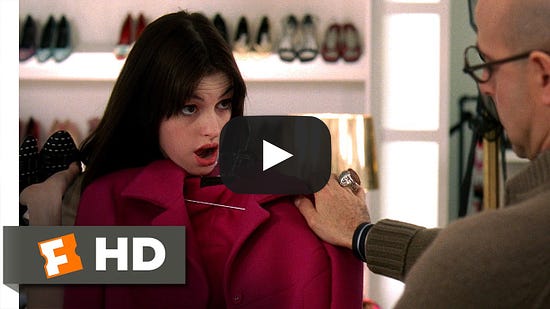 All of this is a 100 percent accurate description of the fetishistic obsession in fashion to be skinny at the time. Remember when Wintour, on 60 Minutes, not only extolled fur but infamously called the people in Minnesota the “size of little houses.” Oh my Lizzo! So, with all that in mind, what are we to make of a new telling of The Devil Wears Prada as a musical that started previews this week in Chicago and is expected to hit Broadway early next year? The musical version was first announced in 2017 and much delayed because of Covid. But do the overwhelming issues of the world today — war, disease, loss of women’s rights, political upheaval — even leave room for a retelling of an alternately frothy and self-involved story from another era that has, in many ways, already been canceled? On Instagram last month, Hathaway heralded the movie’s anniversary with a call to action: “I am struck by the fact that the young female characters in this movie built their lives and careers in a country that honored their right to have choice over their own reproductive health. See you in the fight xx” If Prada the movie was about the “right” size and brands and a sense of exclusion, a recent Instagram post from @pradabroadway is all about inclusion, featuring a plus-sized actress, non-binary performer and talk of sustainability. Broadway producer Kevin McCollum, a Tony winner for In the Heights, Avenue Q, and Rent, and his partners in the estimated $20 million update are thinking big, starting by engaging Elton John (Broadway smash The Lion King, natch, as well as Billy Elliott, Aida, etc.) to write the music, with lyrics by Shaina Taub. In the last few weeks, samples of three of the shows 20-something numbers have been previewed online: “Dress Your Way Up,” “When a Legend Is Born,” and the title track. Originally the musical had veteran scribe Paul Rudnick (who also wrote early scenes for the movie’s screenplay) on board, but now the story is solely credited to actress and writer Kate Wetherhead. Anna D. Shapiro, artistic director of Chicago’s Steppenwolf Theater Company, is directing her first musical and James Alsop, known for working with Beyoncé, is the choreographer. Veteran Arianne Phillips (Once Upon a Time in Hollywood) is masterminding the all-important costumes. Broadway veteran and Tony winner Beth Leavel (Tony winner for The Drowsy Chaperone and star of The Prom; in a neat bit of role-reversal, Meryl Streep took the lead in the Netflix movie) is starring as Miranda Priestly alongside Hamilton’s Taylor Iman Jones as Andy Sachs, and the rest of the cast is noticeably more diverse than the movie. The credits suggest a more cognizant cultural take, as John himself suggested in a recent story in the Chicago Tribune. (The composer’s husband, David Furnish, is also one of the show’s producers.) “We sat down and approached the fact that the movie was 20 years ago and a lot has changed,” John said. “Social media, #MeToo, Black Lives Matter. We thought, we just can’t put in this scenario from 20 years ago.” 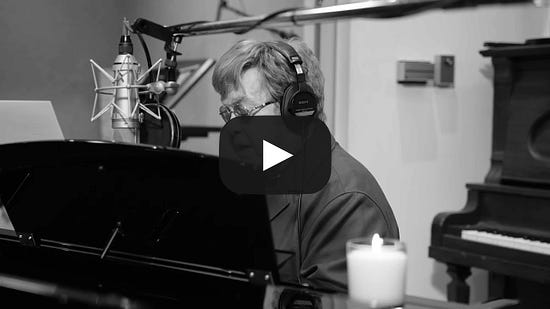 Director Shapiro, best known for edgier Broadway fare like August: Osage County, for which she won a Tony, told Coveteur much the same. “I said, ‘If you want to do this with a bunch of skinny white women, I’m not your person,’” she said. “That has nothing to do with the politics of the moment, that has to do with the reality of fashion and the reality of culture. I wanted it to look like the world that I move through, that my kids move through, and that my students move through.” One challenge with refashioning a “woke" Prada as a glittery musical, as with other cinema hits from the ’80s to the aughts, is that Broadway’s overwhelming tourist audience expects to see what they saw at the movies, and the society that spawned Pretty Woman, Tootsie, Mrs. Doubtfire — all pretty much misfires in their Broadway musical translations in recent seasons — is long gone. Fans who have seen early performances in Chicago are already kvetching on theatre chat board Broadway World over the fact that Leavel wears an ordinary black dress (OMG!) and shapeless red wig instead of the iconic white-tressed coif and lavish ensembles of Streep’s version. But with WFH’s ever-increasing casualization of working wardrobes and the rise of streetwear and buzzy merch “drops,” even fashion itself has changed. The last time I looked, Wintour was wearing a dress from the Gucci x Adidas collab and Harper’s Bazaar’s current EIC Samira Nasr, a former stylist, is often photographed in blue jeans. Nobody seems to be “in desperate need of Chanel,” to quote a line from the movie (except maybe the shoes and the bags). Here’s hoping for the best. But as Diana Vreeland, the legendary editor of Vogue in the swinging ’60s, once said, “magazines are the places where people go to dream,” or something to that effect. I can’t help but wonder, though, with magazines largely irrelevant today and dreams in noticeably short supply, if this reworked Prada will be quite devilish enough. THE MAN SKIRT STRIKES AGAINIn my last column about the men’s fashion flex overtaking the red carpet, I mentioned Oscar Isaac turning up at a Moon Night premiere in a Thom Browne grey flannel blazer and matching pleated skirt (the actor also wore a Browne trompe l’oeil tuxedo with matching black skirt at the Met Gala), as well as Brad Pitt’s recently foray into the wilder shores of male style in his recent GQ cover layout (ha, maybe magazines aren’t dead!). Well, Pitt raised the stakes with his Bullet Train European press tour when he wore a succession of unstructured linen looks that culminated in his stop in Berlin where he varied the jacket-shirt-pants formula by wearing a knee-length brown linen skirt instead (accessorized with combat boots, a rhinoceros tattoo on his shin and a gold David Yurman signet ring). I’m told his team reached out directly to little-known designer Haans Nicholas Mott for the succession of custom fits he featured. Queried about why he made that choice, the ever-chill Pitt explained simply, “The breeze, the breeze.” 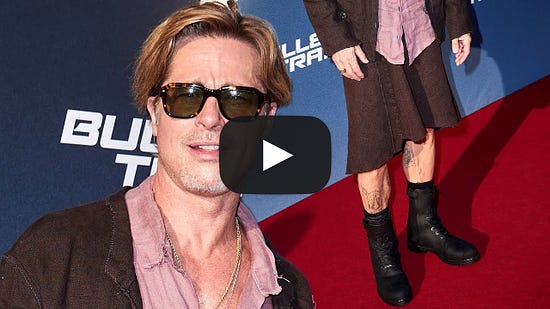 U.N.: THE NEW RED CARPET?I was a little surprised to get an email dispatch from the House of Dior that Prince Harry donned a suit by men’s designer Kim Jones when he addressed the United Nations General Assembly in New York this week on Nelson Mandela International Day this week: Prince Harry Duke of Sussex wore a Dior men’s collection navy wool peak lapel suit. These press releases are business-as-usual for award shows and other appearances by celebrities — especially if they are paid ambassadors for a fashion house — but clothing worn by royalty doesn’t usually get the same kind of attention. 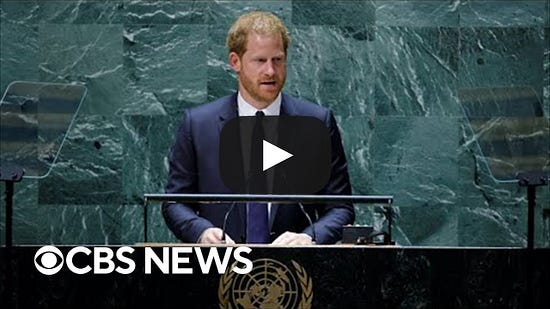 Ed note: If you are a below the line guild member, and interested in a paid subscription to The Ankler, please email your guild credentials to info@theankler.com and we’ll get you set up. We are offering a very special rate to below-the-line guild members, so everyone has a chance to keep up on Hollywood. ICYMI
This week on The Optionist
|
Adieu, Fashion's 'Skinny White Women'?
July 23, 2022
0


